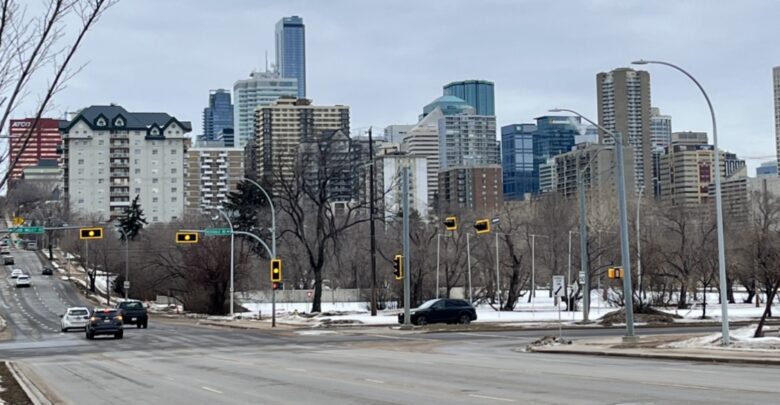Permanent housing initiatives need to be emphasized as affordability declines
Housing needs to be treated as a human right as more Edmontonians face unaffordable housing and homelessness.
 Evan Chen
Evan ChenFor university students, a sudden cold snap means staying in bed and sleeping through morning classes. For Edmonton’s homeless population, a cold day brings with it the risk of frostbite that can lead to loss of fingers and toes, or even death.
In October, the Alberta government spent $5 million funding 450 additional winter shelter spaces, and the last 150 opened in January. This brings the number of shelters in Edmonton to 1,280.
Any measure or funding that protects homeless people from dangerously cold Alberta winters is ultimately a positive. But, with homelessness on the rise in Edmonton, there needs to be a focus on permanent housing. This includes affordable housing to prevent homelessness, and transitional housing for those already experiencing it.
Having lived in condo housing most of my life, where my neighbours are majority low income families and renters, I’ve seen how fast someone can go from housed, to unhoused. If you miss rent for one month, it’s almost impossible to catch up again.
By 2026, it is predicted that there will be a significant shortage of affordable housing in Edmonton. There will be nearly 59,000 households, mostly renters, in unaffordable or substandard homes. The need for affordable housing is already dire. Despite best efforts, even city-run Civida, the largest provider of social housing homes in Edmonton, is unable to keep up with the need — 5,741 households are already waiting for Civida housing.
According to a CBC article, approximately 2,800 people are already homeless, and even more face precarious housing situations. When the federal government cut back spending on affordable housing investments in the 1990s, homelessness began to rise. Preventing more citizens from becoming victims to the housing and cost of living crisis should be a priority.
In September, the City of Edmonton made a commitment to spend $17.6 million to help build 258 units. This commitment will rent for up to 80 per cent of the market rate for 40 years. But as the market rates go up, how will this housing still be affordable? Housing under the market value is still housing that’s unaffordable for many.
Meanwhile, housing isn’t the only necessity steadily becoming unaffordable. The Edmonton Food Bank, as well as the university’s Campus Food Bank (CFB), are seeing record demand. At the CFB, they went from supplying food to 278 individuals in 2021, to 1,331 individuals in February 2023.
Domestic and international students are going to see tuition increases of 5.5 per cent by fall 2023. Even worse, incoming international students in the 2024 academic year face an increase of 6.5 per cent. How many students will have to choose between an education and feeding themselves?
The affordability crisis is worsening, and there is a constant reminder how precarious our quality of life is. Financial security is becoming a myth for the middle class. Having compassion and solidarity with those struggling is acting in the best interest of Edmontonians. Housing needs to be treated as a basic human right, and not something to be earned.
There are programs in place to help homeless people in Edmonton, which is a start.
The Bridge Healing Transitional Accommodation Program will open up 36 beds for homeless Edmontonians who have been released from hospital emergency departments. Each person will have a private unit with access to communal space.
As well, the Mustard Seed Prairie Manor was a former hotel that was turned into a supportive housing facility. According to the Edmonton Journal, there are 85 units, with half reserved for Indigenous people, a group that makes up more than half of Edmonton’s homeless population. The City of Edmonton and federal government renovated the hotel as a part of the Rapid Housing Initiative.
Treating housing as a basic right will help to destigmatize homelessness and financial struggle. If people are housed, they will be able to depend on community, support, and protection from the elements.
A common justification for denying homeless people housing is often substance abuse issues, despite the fact that lack of safe housing and low quality of life are often the root cause of addiction. Struggles with addiction are the most common reason for housing loss, but homelessness can, in turn, cause struggles with addiction. Some programs require homeless people to undergo treatment before being housed.
Nineteen per cent of individuals who spent zero to two months homeless reported addiction issues. At six months, 28.2 per cent of individuals reported substance abuse problems. Safe and reliable housing is the obvious first step to helping homeless people affected by addiction.
Unfortunately, people in Alberta must have a permanent address to receive money from government social programs. Street Health Toronto found that 55 per cent of people experiencing homelessness also have a serious health condition. This policy denies support to those who most need it. Supplying housing would allow homeless people to receive additional support from social programs and treatment for health conditions.
Although the province funded winter shelter spaces reached occupancy of 80 per cent to 100 per cent, they’re still able to accomodate everyone who needs it.
Affordable and transitional housing is making strides. Hopefully, it will catch up to the ever growing amount of people needing those services.
In a wealthy country such as Canada, there should be no reason for anyone to go without a safe place to live in any season or weather. The right to housing is a human right.




